Author Kuan Yuan Chu
Photographer Kungku Chen, Taiwan Scene
In Taiwanese culture, dumplings are popular dishes, traditionally believed to bring fortune and good luck, since their shapes are similar to a form of money used before the advent of modern currency — yuanbao (元寶). Normally, dumplings consist of pieces of dough with delicious savory fillings stuffed inside, and there are many dumpling shops in Taipei that sell this mouth-watering delicacy.
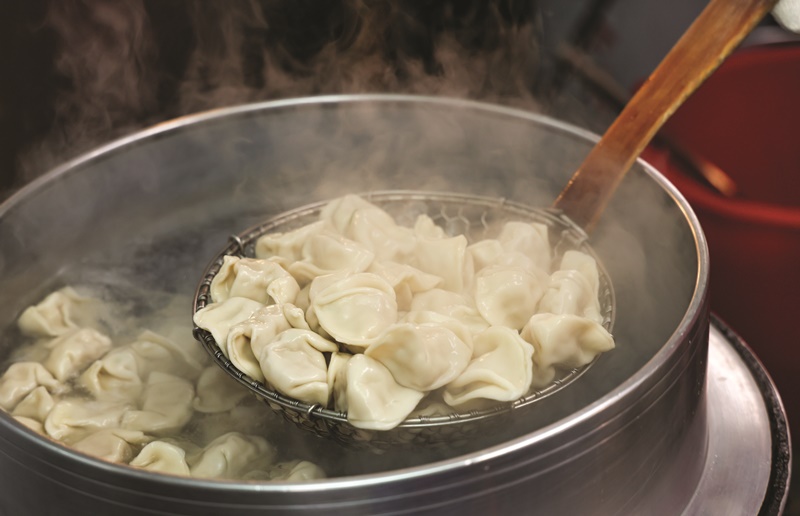
Today, Eric Hsu (徐延之), a media professional who has been the editor-in-chief at various media such as the lifestyle magazine Sense (Sense好感) and the food publication Super Taste (食尚玩家), is here to share with us the many varied dumplings of Taipei not only as an experienced media personality, but also as a citizen of Taipei that knows the city’s restaurants like he does his own kitchen.
The Meaning of Dumplings to Taipeiers
“For people in Taipei, dumplings are an ordinary food in the lives of common people,” Hsu says, further elaborating on this fact by introducing the socio-political background of the dish and his own personal experiences.
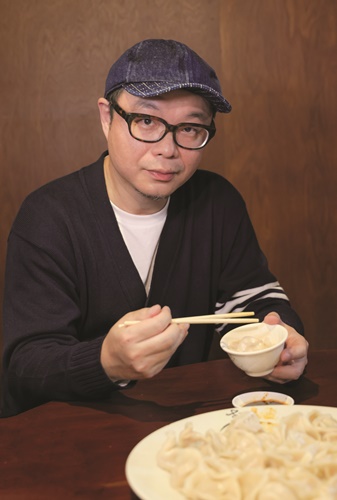
From a social-historical point of view, dumplings were integrated into Taiwanese people’s history and lives after a world-changing event, the arrival of the Republic of China government and millions of immigrants following them between 1948 and 1950. Those from northern China brought their habit of eating flour-based food, including dumplings, to Taiwan.
“In Taipei, if you see dumpling restaurants, there are names that include place names in China like Shandong dumpling restaurant, Qingdao dumpling restaurant. It is because of this historical context,” Hsu says.
Consequently, dumplings are a shared experience of people in Taipei born in the 1970s. “If you ask what the most delicious dumpling is, I think everybody will say the dumpling made by their mother,” Hsu laughs as he describes how the dumplings made in each and every household have their own unique taste of home. “We would bring homemade dumplings in our lunchboxes to school,” Hsu recalls. “For our generation, sometimes it is just a memory of lunch in school, just like you will see a pickled plum in a typical Japanese lunch box.” Reliving this sweet experience, Hsu points out that he would always finish his lunch box happily.
Dumplings are not only a dish of the past, however. They are also, according to Hsu, commonly found on almost every block that satisfies stomachs and minds, always there to help people relax in this busy city. “They are just food to comfort my mind. You can have them anytime and anywhere without pressure. For me, dumplings represent this kind of existence,” Hsu says.
Dumpling Treasure-Hunting Fun
Every household has its own recipe. Thus, the flavors of dumplings that restaurants can provide in Taipei are also deliciously diverse. As Hsu points out, this highlights the city’s essence, as Taipei is a city where different ethnicities from distinct areas of China have assembled and interacted for generations. “I think the city itself is a small area, but it is also a melting pot of different people and cultures,” Hsu says.
As a result, the dumplings of Taipei vary widely, and almost every spot will have their own unique recipes. But for Hsu and others, the original style from their childhood is still their favorite. “Some dumpling restaurants put innovative ingredients inside the fillings. Those are not acceptable for me personally. I like old-school, conventional, authentic dumplings,” Hsu laughs. “Just like Hawaiian pizza is considered a humiliation for Italian people, for me, dumplings should be filled with cabbage, Chinese cabbage or Chinese chive,” Hsu chuckles again.
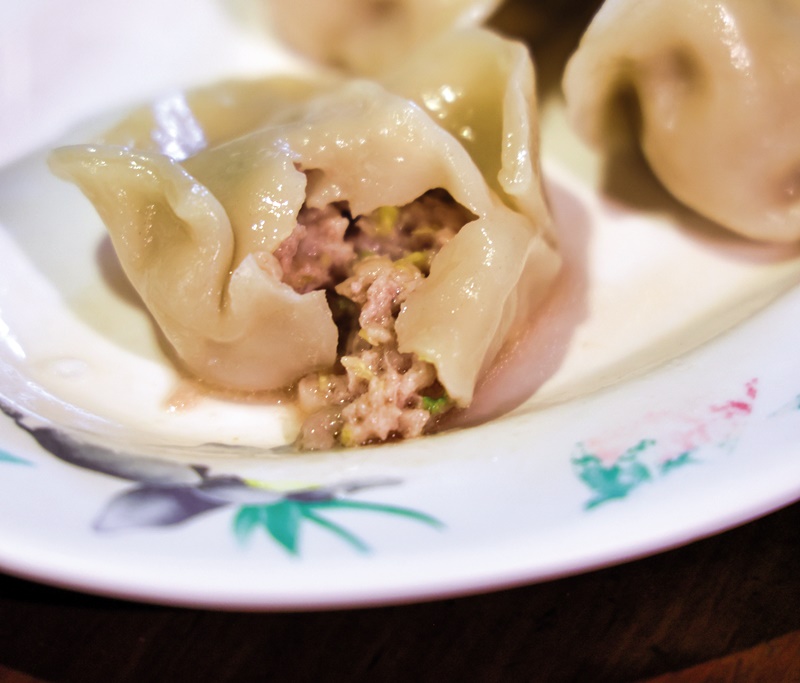
With the unique recipes of each dumpling restaurant spread out in Taipei, treasure hunting for good dumplings has become an entertaining activity for Hsu, and this city is certainly full of these sort of magical spots. “This kind of surprise, to find good dumplings, is an enjoyable little thing in life that is rather easy to achieve,“ Hsu shares.
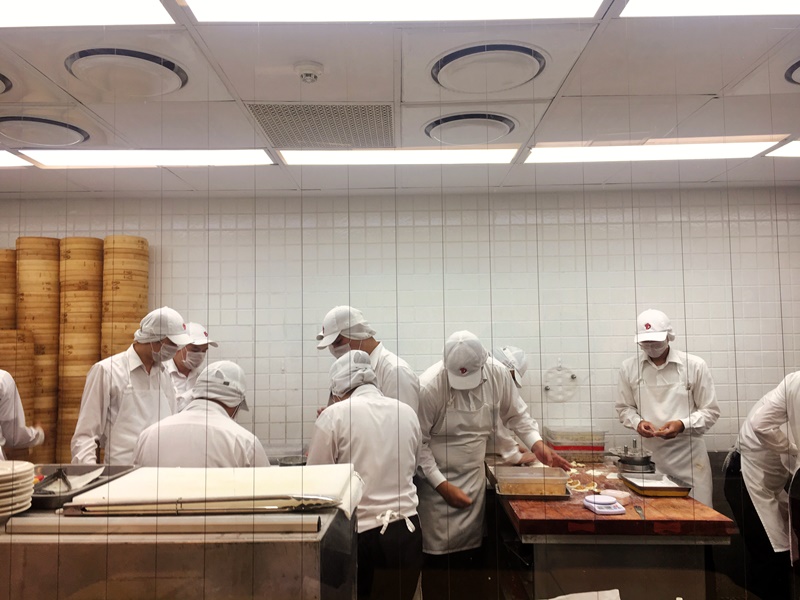
Various Types of Dumplings
Besides the commonly seen boiled dumplings (水餃), there are various ways to cook these deliciously wrapped delicacies. Among them, steamed dumplings (蒸餃), potstickers (鍋貼) and fried dumplings (煎餃) are the most popular.
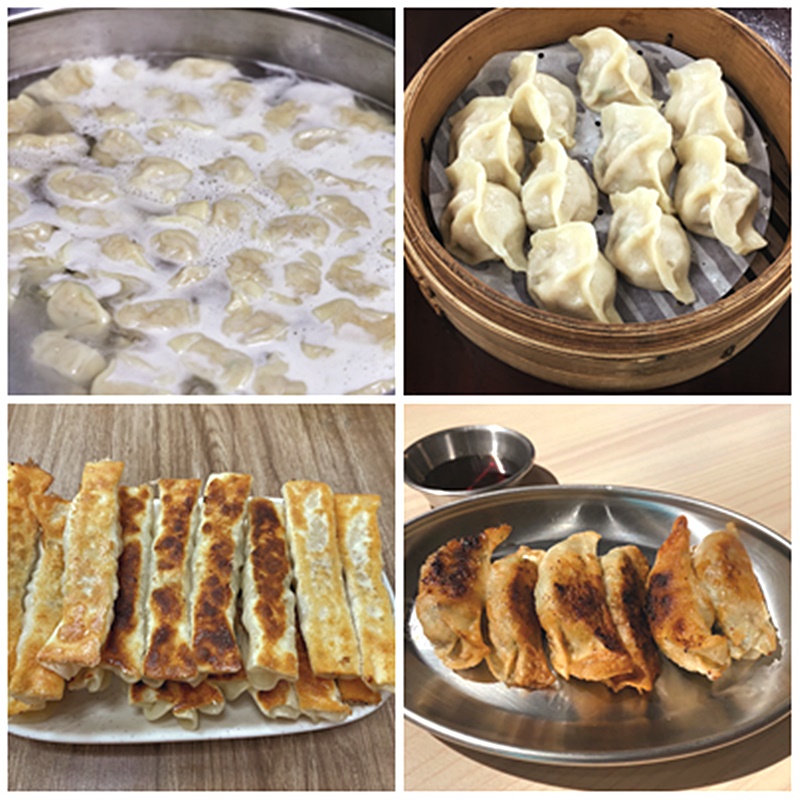
Steamed dumplings are like xiaolongbao (小籠包) that are cooked inside wooden steamers. Some restaurants will put pine branches under the steamers to add the fragrance of pine into the dumplings. And the wrappers of steamed dumplings are different from those of boiled dumplings. Owing to the way they are cooked, it is easy for the texture of a steamed dumpling’s skin to become hard. To avoid this, the dough that comprises the wrapper should be blended with some boiling hot water so the dumplings can be perfectly soft. After steaming, the wrappers will look kind of transparent, like jelly, while tasting soft yet dense.
Potstickers and fried dumplings are both pan-fried; thus they can be confusing for some people. But the difference is that, in terms of appearance, potstickers are usually longer than fried dumplings, while the two sides of them are opened. Besides, when cooking potstickers, less water will be added, and thus they will taste dryer.
On the other hand, fried dumplings are more like original dumplings shaped like yuanbao, cooked utilizing the pan-fried method with more water than potstickers.
Hsu reveals one interesting bit of history, in that fried dumplings were not common for Taiwanese people in the past. So, dishes in this form only appear as potstickers. Fried dumplings only became popular after Japanese culture and dishes, including the similar gyoza, showed up in Taiwan during 2000s. But the Japanese gyoza has a thin wrap and strong taste, and they are eaten as side dishes, while Taiwanese people eat dumplings as the main course.
What Makes for a Tasty Dumpling?
Wrappers
“For me, the first thing to mention is the wrappers,” Hsu says. The dough and dumpling wrappers directly influence the feelings when the dumplings are put into people’s mouths. The best wrappers should be freshly handmade.
The most obvious difference will be the feeling of smoothness. A nice, chewy texture can only be provided by freshly-made wrappers. A freshly handmade wrapper needs some extra flour to avoid the dumplings sticking to each other, thus endowing the dumplings with a feeling of tenderness when they touch the lips and tongue. Machine-made wrappers can be thinner, but they will easily become hard after they are dry.
When talking about wraps, one crucial element of good potstickers and fried dumplings is the “wings (flour skin on the surface between the dumplings and the pot)” that add a crispy element to the meal. Hsu recommends a restaurant that was awarded with Michelin Taipei’s Bib Gourmand, Do It True (都一處) in Xinyi District. Their Da Lian Huo Shao (褡褳火燒) are considered by Hsu to be among the best potstickers in Taipei. The wrappers are delightfully crispy, and they perfectly seal in the filling, making them superbly juicy.
Fillings
Finding the perfect combination of fillings is also an important element for a good dumpling. The ingredients should perfectly match each other. For instance, fish dumplings are provided in Hsu’s recommended restaurant, San-Lao Village (三老村). The fillings of these fish dumplings strike a perfect balance, as the Chinese chive inside works well with the light-taste of the fish. Or there is the famous old-school taste of Qingdao Dumpling House (青島餃子館), which mixes a perfect percentage of ginger into their pork filling, creating a superb, refreshing taste.
The fillings of potstickers at Zhangji Potstickers and Beef Noodles (張記鍋貼牛肉麵) are also mentioned by Hsu, as instead of the common Chinese chive, Zhangji’s fillings are added together with hotbed chives, distinguish themselves from other restaurants’ potstickers.
Sauces
The sauces are such a crucial element that sometimes Hsu will simply ask a restaurant owner, “How is your spicy sauce?” to decide if it is worthy or not. As the homemade spicy sauce is such an important factor for him, like the sauce at Dragon Inn Dumplings (龍門客棧餃子館), he will also seek recommendations from the owner, trying to conjure up the best experience the restaurant wishes to provide. Commonly, the classic trio of sauces is soy, sesame oil and vinegar.
Besides these three elements, Hsu thinks a great meal of dumplings in Taipei is an integrated experience, including side dishes and braised food. Under this lens, the Linsen branch (林森店) of Dragon Inn Dumplings is highly rated by Hsu, as all of these actors play their roles well in the symphony of a dumpling feast there.
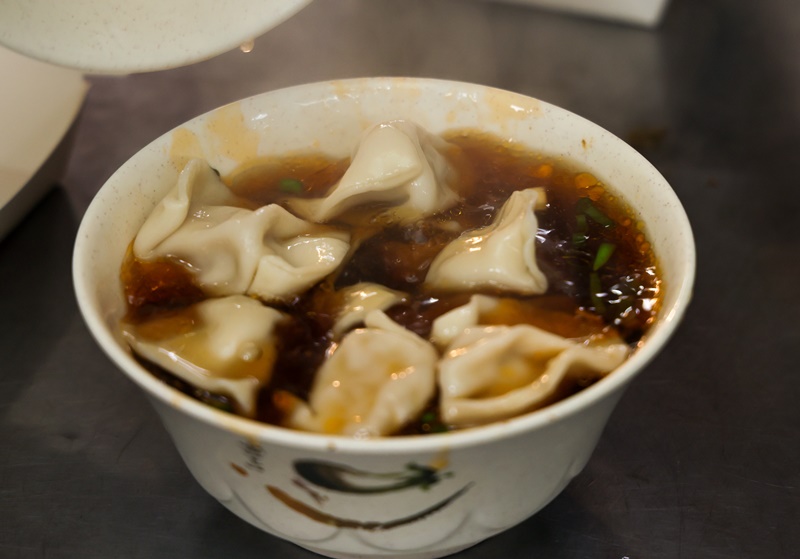
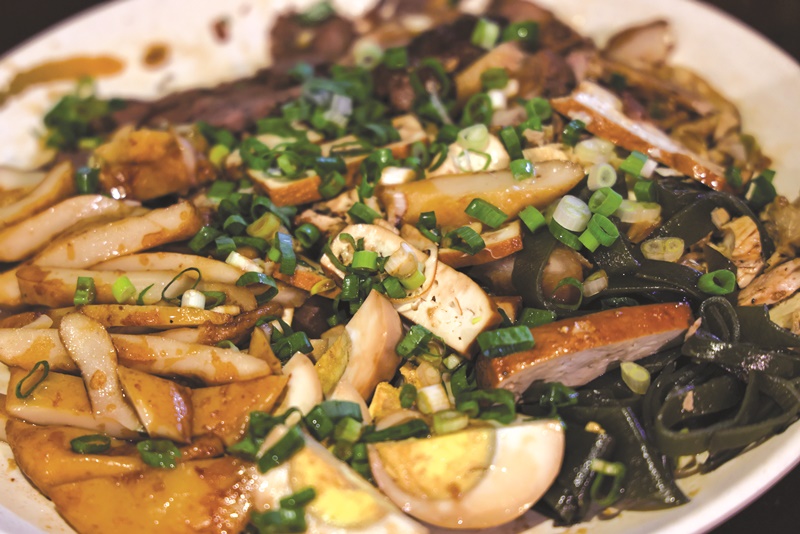
Recommendations
Boiled Dumplings
Dragon Inn Dumplings (Linsen Branch) 龍門客棧餃子館 (林森店)
ADD 19, Ln. 61, Linsen S. Rd., Zhongzheng Dist.
HOURS 5:00pm – 10:45pm (Closed on Mondays)
Qingdao Dumpling House 青島餃子館
ADD 199, Longjiang Rd., Zhongshan Dist.
HOURS 11:00am – 2:00pm, 5:00pm – 9:00pm
(Monday to Friday)
(Closed on Saturdays and Sundays)
San-Lao Village 三老村
ADD 5, Sec. 3, Muzha Rd., Wenshan Dist.
HOURS 11:30am – 2:30pm, 5:00pm – 8:30pm
(Monday to Saturdays)
(Closed on Sundays)
Potstickers
Do It True (Renai Branch) 都一處 (仁愛店)
ADD 506, Sec. 4, Renai Rd., Xinyi Dist.
HOURS 11:00am – 2:00pm, 5:00pm – 9:00pm
Zhangji Potstickers and Beef Noodles 張記鍋貼牛肉麵
ADD 6, Ln. 101, Yanping S. Rd., Zhongzheng Dist.
HOURS 11:00am – 2:00pm, 4:30pm – 7:30pm
(Closed on Saturdays and Sundays)
Fried Dumplings
TAIHU Dumpling House 臺虎居餃屋
ADD No. 155, Jinhua St., Daan Dist.
HOURS 4:00pm – 11:30pm (Monday to Thursday)
11:00am – 00:30am (Friday to Saturday)
11:00am – 11:30pm (Sunday)

Steamed Dumplings
DIN TAI FUNG (Xinsheng Branch) 鼎泰豐 (新生店)
ADD No. 277, Sec. 2, Xinyi Rd., Zhongzheng Dist.
HOURS 11:00am – 8:30pm (Monday to Friday)
10:00am – 8:30pm (Saturday to Sunday)
This article is reproduced under the permission of TAIPEI. Original content can be found on the website of Taipei Travel Net (www.travel.taipei/en).











